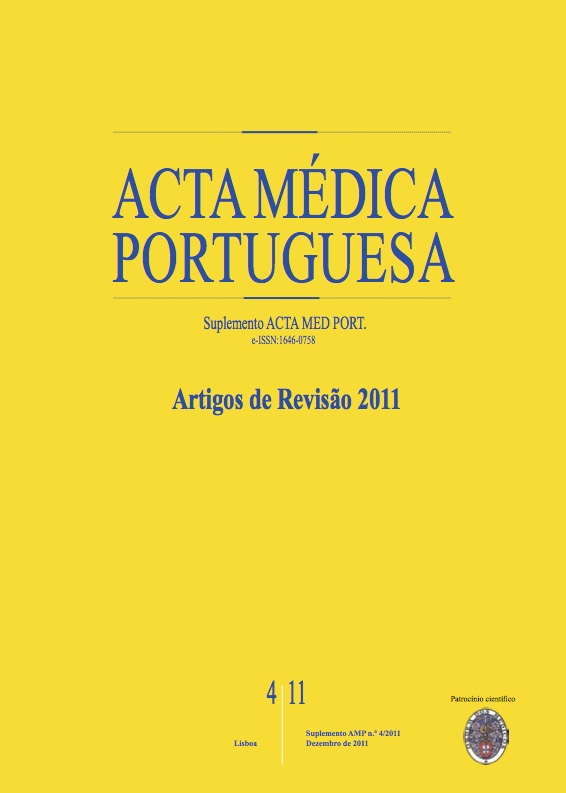Paralisia facial periférica: o papel da medicina física e de reabilitação.
DOI:
https://doi.org/10.20344/amp.1578Resumo
Peripheral facial paralysis (PFP) is a consequence of the peripheral neuronal lesion of the facial nerve (FN). It can be either primary (Bell`s Palsy) or secondary. The classical clinical presentation typically involves both stages of the hemiface. However, there may be other symptoms (ex. xerophthalmia, hyperacusis, phonation and deglutition changes) that one should recall. Clinical evaluation includes rigorous muscle tonus and sensibility search in the FN territory. Some useful instruments allow better objectivity in the patients' evaluation (House-Brackmann System, Facial Grading System, Functional Evaluation). There are clear referral criteria to Physical Medicine and Rehabilitation. Treatment of Bell`s Palsy may include pharmacotherapy, neuromuscular training (NMT), physical methods and surgery. In the NMT field the several treatment techniques are systematized. Therapeutic strategies should be problem-oriented and adjusted to the patient's symptoms and signs. Physical methods are reviewed. In about 15-20 % of patients permanent sequelae subside after 3 months of evolution. PFP is commonly a multidisciplinary condition. Therefore, it is important to review strategies that Physical Medicine and Rehabilitation may offer.Downloads
Downloads
Como Citar
Edição
Secção
Licença
Todos os artigos publicados na AMP são de acesso aberto e cumprem os requisitos das agências de financiamento ou instituições académicas. Relativamente à utilização por terceiros a AMP rege-se pelos termos da licença Creative Commons ‘Atribuição – Uso Não-Comercial – (CC-BY-NC)’.
É da responsabilidade do autor obter permissão para reproduzir figuras, tabelas, etc., de outras publicações. Após a aceitação de um artigo, os autores serão convidados a preencher uma “Declaração de Responsabilidade Autoral e Partilha de Direitos de Autor “(http://www.actamedicaportuguesa.com/info/AMP-NormasPublicacao.pdf) e a “Declaração de Potenciais Conflitos de Interesse” (http://www.icmje.org/conflicts-of-interest) do ICMJE. Será enviado um e-mail ao autor correspondente, confirmando a receção do manuscrito.
Após a publicação, os autores ficam autorizados a disponibilizar os seus artigos em repositórios das suas instituições de origem, desde que mencionem sempre onde foram publicados e de acordo com a licença Creative Commons









